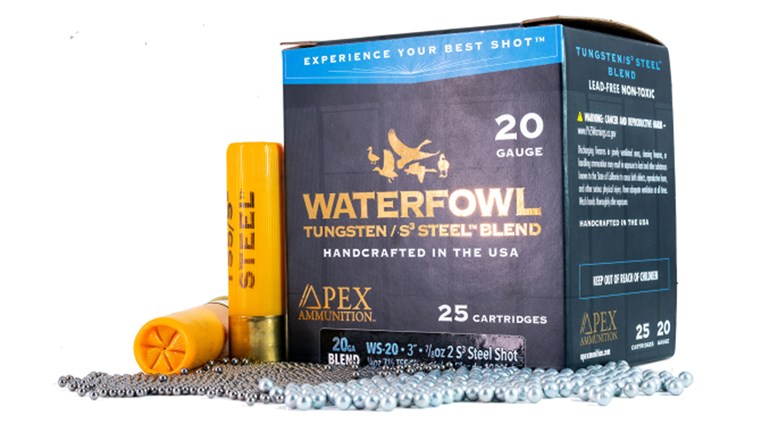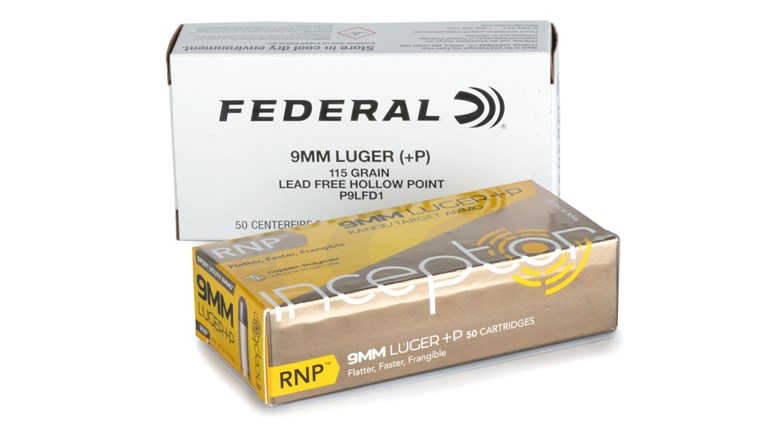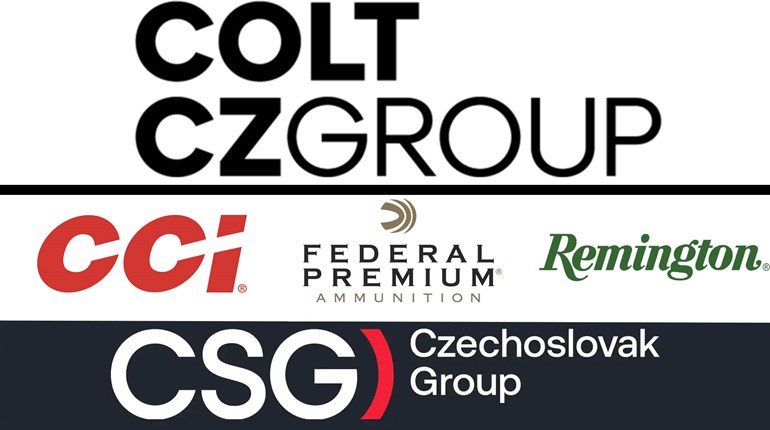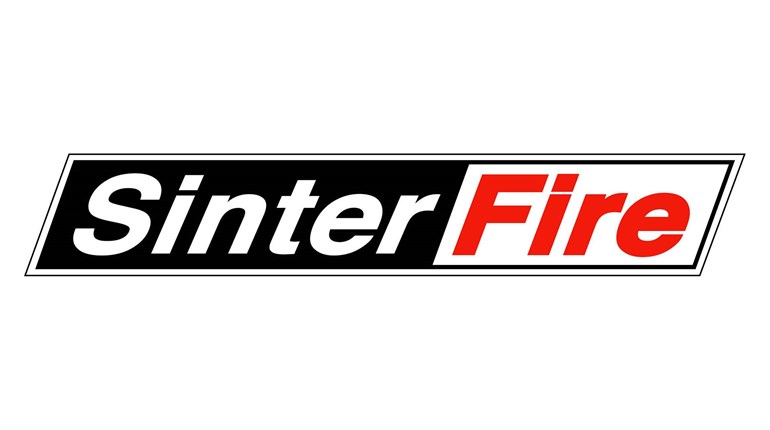
If your game is to suck our reviewer(s) into the proverbial “tight turn,” here’s a hint: Be clever. Even without perfect execution—the first time around, at any rate—you buy a lot with our crack team by using the old noodle.
If an outfit is on their game, however, and do get the first iteration right, they’ll pretty much have us eating out of their hand. The latter, we think, is our state vis a vis American Precision Target Systems. In a comparative sea of steel targets—an odd mental image, we concede—the company has impressed us big time with their 2/3 Scale USPSA/IPSC Silhouette.
You won’t look far to discover our affinity for shooting on reduced-size targets. Call it “lazy” (they don’t have to be set out as far) or “weak” (they aren’t as heavy) as suits your bias; we settle for “easier.” So sue us.
Reduced size, however, is not without hazards of a sort. A smaller target is going to have to absorb more punishment if shooters do their part, so cheesy materials won’t cut it.
No hint of said cheese fouled our testing of the APTS center-of-mass/hostage silhouette. We’ve banged it pretty hard with rifle calibers up to 7.62x51 (.308 Win) and pistols up to .45 ACP, and the target is clearly winning at about 500 mixed rounds—no pits at all that we can spot. (With AR500 steel this is really no surprise, but know the recommended distances, velocities and bullet weights for safe use and long life in any steel target.)
If you’re an experienced user of steel targets, you may be at the “meh–moving on” stage, but here’s why that miiiiight be a mistake. Unlike most other reactive systems, the APTS silhouette is completely toolless from start to finish. There are no bolts to work loose (or shoot the heads off of—been there, done that), no springs to wear out, and only four small, well-protected welds in the whole system, stand and all. That’s 12 parts, total.

And before you get your knickers in a wad about that count, inspect other systems—including attachments—and you’ll find they are little different, just combined in often heavier and nearly always bulkier sub-assemblies. The higher “loose” parts count of the APTS may have you thinking they’re tougher to set up, but 30 seconds (leaving the “target” assembled) or 70 seconds (all parts loose) shouldn’t daunt anyone—especially if you spot-color the assembled joints as we did. Better still is that light components don’t tend to pinch fingers, bark knuckles and dent/scratch/nick what they shouldn’t when man- or woman-handling inevitably goes awry.
What you get in return is an easy fit, even in the so-called trunk of a Smart car. The legs of APTS also “nest” in a way most others won’t, so multiples can store or transport efficiently, too. Try that with the ”H” pattern bases most others use.
Another nice touch isn’t part of the target, per se. This is galvanizing of all the non-target stand and bracket components. While it’d be easy to write this off as a cosmetic nicety—which it is—it also means these A36 steel components won’t rust (or leave rust stains behind), and will stay cooler to the touch. Leave a steel target set up on a hot day, and you won’t mind this a bit.
With all this enviable design cleverness to comment on, it’s possible to overlook the more direct benefits of practice/training on a target like the Center-of-Mass and Hostage system. Especially on a reduced scale target, flapping the center mass flag is a demanding shot. We know some people like to paint this a different color (and this is especially easy to do on the APTS system because of dis- and re-assembly ease), but we think it’s better not to add this advantageous aiming cue. Trust us, you’ll know when you ding the flapper, and it compels front-sight-focus-like-crazy to routinely get that hit. But another desirable side-effect of reduced-sized practice means that even a “miss” of the flag constitutes a decent shot. When you go back to full size, “A” zone shots at considerable speed are almost absurdly easy.
We’d argue the “hostage” flag adds another dimension altogether. Here you’ll be engaging a precision target in proximity to an explicit no-shoot, and consistent slow fire hits here are more than a little nerve-wracking. When added to self-resetting in a different location (the other side of the no-shoot “head”), it forces transition plus precision in a way even plate racks can’t match. Here again, you can paint a different color if you choose, though there are reasons not to. While we profoundly hope you never have to take a shot like this except for skill-building and fun, we’re pretty sure it won’t be at a blaze orange whatever. So why practice on a blaze orange disk? On the other hand, there are some fun and challenging exercises that the “dueling” aspect of the flag allows, and here blaze orange and fluorescent green are the way to go.
We’ll wind down with some safety observations. We still see folks shooting steel without eye protection, and this is a comparatively serious double no-no. Ejecta from firearms makes eye protection a must no matter what sort of target you are engaging, but high-velocity particulates or outright fragments from steel targets rebounding back are an eventual, eye-hazardous certainty.

We tried to excite this from the APTS given the more corrugated target face and hanger setup, but it didn’t seem any worse than our other “clangers” of similar metallurgical quality. That über-tough AR500 doing its job, in other words. But the Hostage/CoM also has a 20-degree downward-tilted face, and grounded everything in our tests well before they reached our shooting position.
Finally, the more you shoot steel targets, the more you’ll likely want to. There’s not much that matches the audible feedback of a shot in terms of that satisfying “ding.” With this enthusiasm may come a sensible desire to reduce frag risk to the lowest possible level. If that’s where you are, seriously consider frangible ammo like that from our pals at SinterFire. Purchased either as finished rounds or component bullets, their powdered metal projectiles return to powder upon a steel strike, and when they say powder, they mean it. We use them in both pistol and rifle, and like their added safety margin.
There is a little bad news: Given our head, there’s still more that’s good to say about American Precision Targets. By this point, however, we figure you know what you need to decide for yourself.
Visit American Precision Target Systems at https://shootsomesteel.com/. MSRP on the Center-of-Mass/Hostage Silhouette is $376.50. Armored shield for the target post to deflect rifle-velocity projectiles is $83. Optional gong hanger and three gongs are available, too.
Frank Winn has been studying arms and their relationship to tyranny, meaningful liberty and personal security all his adult life. He has been a firearms safety/shooting instructor for more than 20 years, and earned state, regional and national titles in several competitive disciplines.


































